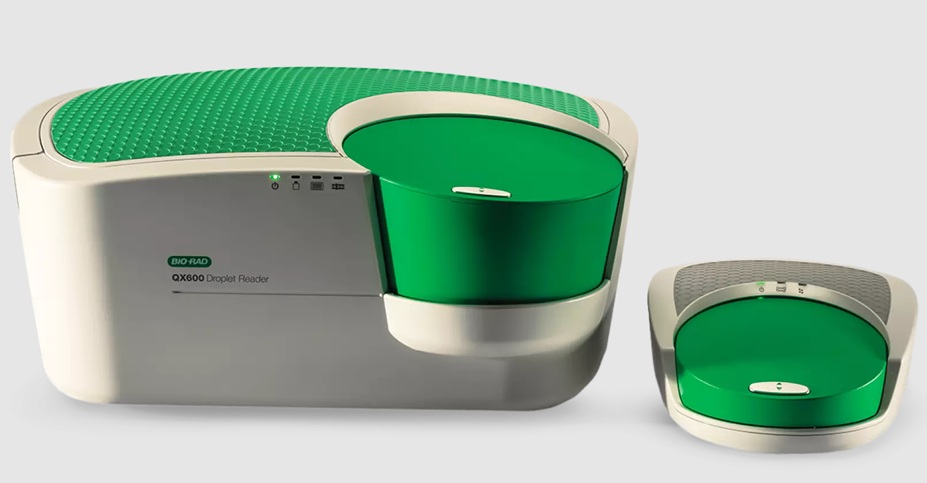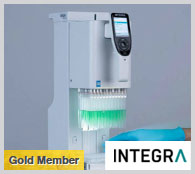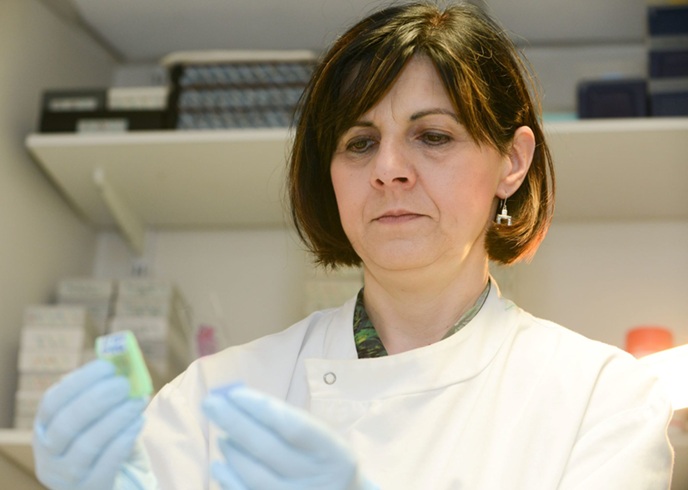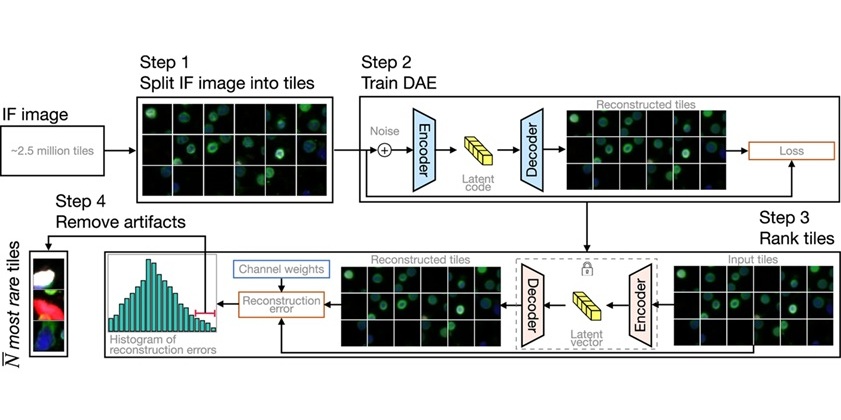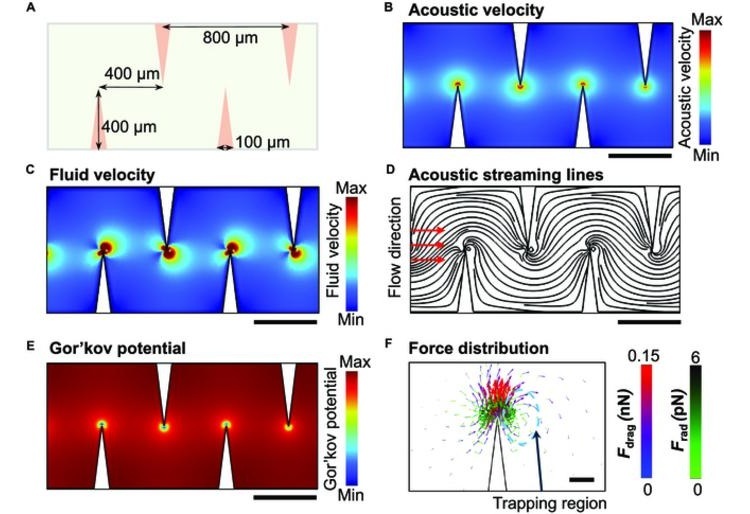Two Rapid Tests for Diagnosis of the Novel Chinese Coronavirus
|
By LabMedica International staff writers Posted on 13 Feb 2020 |
![Image: This illustration reveals ultrastructural morphology exhibited by coronaviruses. Note the spikes that adorn the outer surface of the virus, which impart the look of a corona surrounding the virion, when viewed electron microscopically. A novel coronavirus virus was identified as the cause of an outbreak of respiratory illness first detected in Wuhan, China in 2019 (Photo courtesy of [U.S.] Centers for Disease Control and Prevention (CDC) Image: This illustration reveals ultrastructural morphology exhibited by coronaviruses. Note the spikes that adorn the outer surface of the virus, which impart the look of a corona surrounding the virion, when viewed electron microscopically. A novel coronavirus virus was identified as the cause of an outbreak of respiratory illness first detected in Wuhan, China in 2019 (Photo courtesy of [U.S.] Centers for Disease Control and Prevention (CDC)](https://globetechcdn.com/mobile_labmedica/images/stories/articles/article_images/2020-02-13/GMS-021B.jpg)
Image: This illustration reveals ultrastructural morphology exhibited by coronaviruses. Note the spikes that adorn the outer surface of the virus, which impart the look of a corona surrounding the virion, when viewed electron microscopically. A novel coronavirus virus was identified as the cause of an outbreak of respiratory illness first detected in Wuhan, China in 2019 (Photo courtesy of [U.S.] Centers for Disease Control and Prevention (CDC)
Two new rapid diagnostic tests are set to enable clinicians to detect individuals infected with the potentially pandemic “Chinese” coronavirus.
A novel coronavirus of zoonotic origin (2019-nCoV) has recently been identified in patients with acute respiratory disease. This virus is genetically similar to SARS coronavirus and bat SARS-like coronaviruses. The outbreak was initially detected in Wuhan, a major city of China, but has subsequently been detected in other provinces of China as well as in several other countries.
Signs of infection are highly non-specific and these include respiratory symptoms, fever, cough, dyspnea, and viral pneumonia. Currently, experts estimate that only 5.1% of coronavirus cases in Wuhan have actually been diagnosed clinically. Therefore, diagnostic tests specific for this infection are urgently needed for confirming suspected cases, screening patients, and conducting virus surveillance.
In this regard, investigators at the University of Hong Kong (China) developed two rapid tests for detection of coronavirus. The two one-step quantitative real-time reverse-transcription PCR (RT-PCR) assays detect two different regions (ORF1b and N) of the viral genome. The primer and probe sets were designed to react with this novel coronavirus and closely related viruses, such as SARS coronavirus. These assays, which require only about an hour and a quarter to perform, were evaluated using a panel of positive and negative controls. In addition, respiratory specimens from two 2019-nCoV-infected patients were tested.
Using RNA extracted from cells infected by SARS coronavirus as a positive control, these assays were shown to have a dynamic range of at least seven orders of magnitude.. Using DNA plasmids as positive standards, the detection limits of the assays were found to be below 10 copies per reaction. All negative control samples were negative in the assays. Samples from two 2019-nCoV-infected patients were positive in the tests. The negative results for samples containing genetic material from other respiratory viruses demonstrated that the tests accurately differentiated coronavirus infection from other causes of pneumonia.
“Signs of [coronavirus] infection are highly non-specific and these include respiratory symptoms, fever, cough, [shortness of breath], and viral pneumonia,” said senior author Dr. Leo L.M. Poon, professor of public health at the University of Hong Kong. “Thus, diagnostic tests specific for this infection are urgently needed for confirming suspected cases, screening patients, and conducting virus surveillance. The established assays [in this study] can achieve a rapid detection of 2019-novel-coronavirus in human samples, thereby allowing early identification of patients.”
The new assays were described in the January 31, 2020, online edition of the journal Clinical Chemistry.
Related Links:
University of Hong Kong
A novel coronavirus of zoonotic origin (2019-nCoV) has recently been identified in patients with acute respiratory disease. This virus is genetically similar to SARS coronavirus and bat SARS-like coronaviruses. The outbreak was initially detected in Wuhan, a major city of China, but has subsequently been detected in other provinces of China as well as in several other countries.
Signs of infection are highly non-specific and these include respiratory symptoms, fever, cough, dyspnea, and viral pneumonia. Currently, experts estimate that only 5.1% of coronavirus cases in Wuhan have actually been diagnosed clinically. Therefore, diagnostic tests specific for this infection are urgently needed for confirming suspected cases, screening patients, and conducting virus surveillance.
In this regard, investigators at the University of Hong Kong (China) developed two rapid tests for detection of coronavirus. The two one-step quantitative real-time reverse-transcription PCR (RT-PCR) assays detect two different regions (ORF1b and N) of the viral genome. The primer and probe sets were designed to react with this novel coronavirus and closely related viruses, such as SARS coronavirus. These assays, which require only about an hour and a quarter to perform, were evaluated using a panel of positive and negative controls. In addition, respiratory specimens from two 2019-nCoV-infected patients were tested.
Using RNA extracted from cells infected by SARS coronavirus as a positive control, these assays were shown to have a dynamic range of at least seven orders of magnitude.. Using DNA plasmids as positive standards, the detection limits of the assays were found to be below 10 copies per reaction. All negative control samples were negative in the assays. Samples from two 2019-nCoV-infected patients were positive in the tests. The negative results for samples containing genetic material from other respiratory viruses demonstrated that the tests accurately differentiated coronavirus infection from other causes of pneumonia.
“Signs of [coronavirus] infection are highly non-specific and these include respiratory symptoms, fever, cough, [shortness of breath], and viral pneumonia,” said senior author Dr. Leo L.M. Poon, professor of public health at the University of Hong Kong. “Thus, diagnostic tests specific for this infection are urgently needed for confirming suspected cases, screening patients, and conducting virus surveillance. The established assays [in this study] can achieve a rapid detection of 2019-novel-coronavirus in human samples, thereby allowing early identification of patients.”
The new assays were described in the January 31, 2020, online edition of the journal Clinical Chemistry.
Related Links:
University of Hong Kong
Latest COVID-19 News
- New Immunosensor Paves Way to Rapid POC Testing for COVID-19 and Emerging Infectious Diseases
- Long COVID Etiologies Found in Acute Infection Blood Samples
- Novel Device Detects COVID-19 Antibodies in Five Minutes
- CRISPR-Powered COVID-19 Test Detects SARS-CoV-2 in 30 Minutes Using Gene Scissors
- Gut Microbiome Dysbiosis Linked to COVID-19
- Novel SARS CoV-2 Rapid Antigen Test Validated for Diagnostic Accuracy
- New COVID + Flu + R.S.V. Test to Help Prepare for `Tripledemic`
- AI Takes Guesswork Out Of Lateral Flow Testing
- Fastest Ever SARS-CoV-2 Antigen Test Designed for Non-Invasive COVID-19 Testing in Any Setting
- Rapid Antigen Tests Detect Omicron, Delta SARS-CoV-2 Variants
- Health Care Professionals Showed Increased Interest in POC Technologies During Pandemic, Finds Study
- Set Up Reserve Lab Capacity Now for Faster Response to Next Pandemic, Say Researchers
- Blood Test Performed During Initial Infection Predicts Long COVID Risk
- Low-Cost COVID-19 Testing Platform Combines Sensitivity of PCR and Speed of Antigen Tests
- Finger-Prick Blood Test Identifies Immunity to COVID-19
- Quick Test Kit Determines Immunity Against COVID-19 and Its Variants
Channels
Clinical Chemistry
view channel
VOCs Show Promise for Early Multi-Cancer Detection
Early cancer detection is critical to improving survival rates, but most current screening methods focus on individual cancer types and often involve invasive procedures. This makes it difficult to identify... Read more
Portable Raman Spectroscopy Offers Cost-Effective Kidney Disease Diagnosis at POC
Kidney disease is typically diagnosed through blood or urine tests, often when patients present with symptoms such as blood in urine, shortness of breath, or weight loss. While these tests are common,... Read moreMolecular Diagnostics
view channel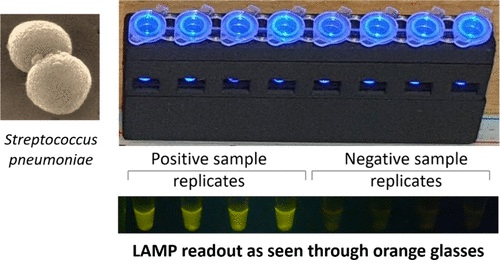
New Diagnostic Method Detects Pneumonia at POC in Low-Resource Settings
Pneumonia continues to be one of the leading causes of death in low- and middle-income countries, where limited access to advanced laboratory infrastructure hampers early and accurate diagnosis.... Read more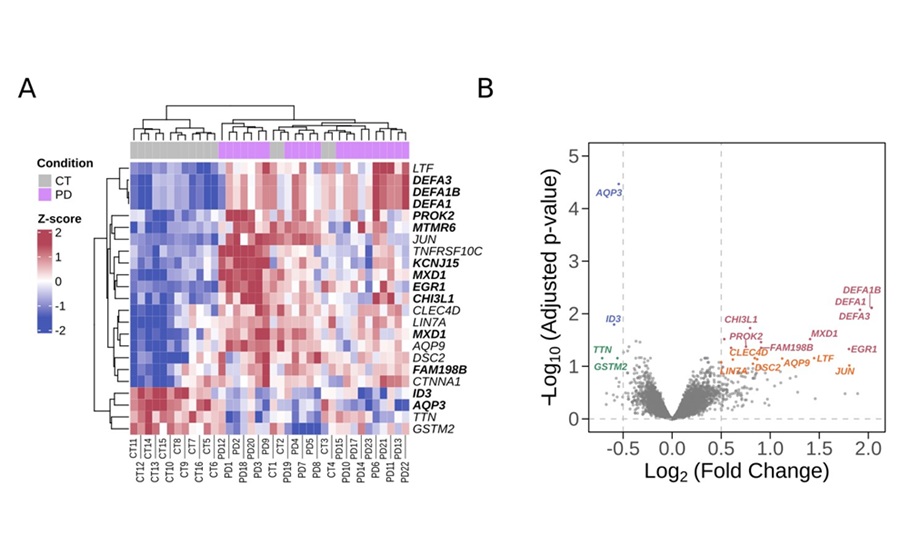
Blood Immune Cell Analysis Detects Parkinson’s Before Symptoms Appear
Early diagnosis of Parkinson’s disease remains one of the greatest challenges in neurology. The condition, which affects nearly 12 million people globally, is typically identified only after significant... Read moreHematology
view channel
ADLM’s New Coagulation Testing Guidance to Improve Care for Patients on Blood Thinners
Direct oral anticoagulants (DOACs) are one of the most common types of blood thinners. Patients take them to prevent a host of complications that could arise from blood clotting, including stroke, deep... Read more
Viscoelastic Testing Could Improve Treatment of Maternal Hemorrhage
Postpartum hemorrhage, severe bleeding after childbirth, remains one of the leading causes of maternal mortality worldwide, yet many of these deaths are preventable. Standard care can be hindered by delays... Read more
Pioneering Model Measures Radiation Exposure in Blood for Precise Cancer Treatments
Scientists have long focused on protecting organs near tumors during radiotherapy, but blood — a vital, circulating tissue — has largely been excluded from dose calculations. Each blood cell passing through... Read moreImmunology
view channel
Blood-Based Liquid Biopsy Model Analyzes Immunotherapy Effectiveness
Immunotherapy has revolutionized cancer care by harnessing the immune system to fight tumors, yet predicting who will benefit remains a major challenge. Many patients undergo costly and taxing treatment... Read more
Signature Genes Predict T-Cell Expansion in Cancer Immunotherapy
Modern cancer immunotherapies rely on the ability of CD8⁺ T cells to rapidly multiply within tumors, generating the immune force needed to eliminate cancer cells. However, the biological triggers behind... Read moreMicrobiology
view channel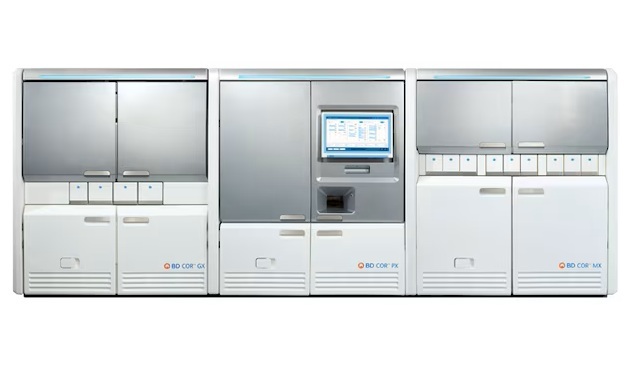
High-Throughput Enteric Panels Detect Multiple GI Bacterial Infections from Single Stool Swab Sample
Gastrointestinal (GI) infections are among the most common causes of illness worldwide, leading to over 1.7 million deaths annually and placing a heavy burden on healthcare systems. Conventional diagnostic... Read more
Fast Noninvasive Bedside Test Uses Sugar Fingerprint to Detect Fungal Infections
Candida bloodstream infections are a growing global health threat, causing an estimated 6 million cases and 3.8 million deaths annually. Hospitals are particularly vulnerable, as weakened patients after... Read morePathology
view channel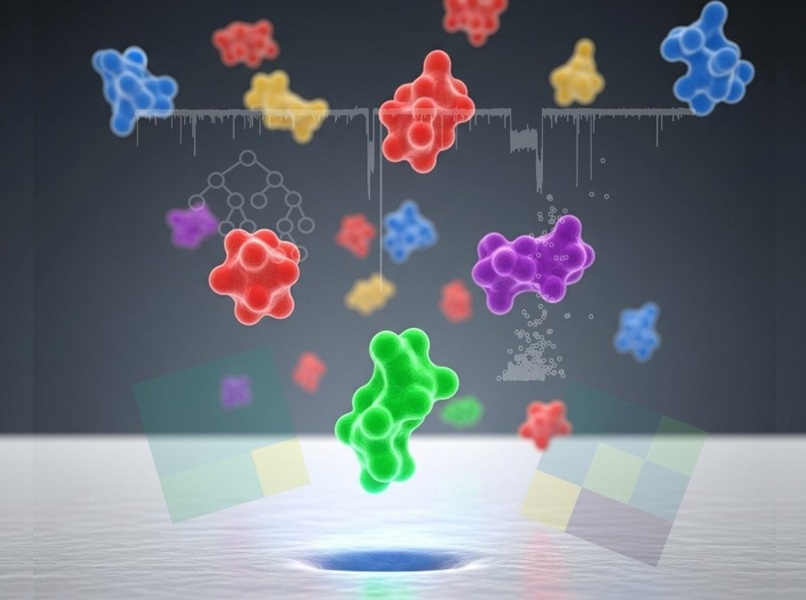
New Molecular Analysis Tool to Improve Disease Diagnosis
Accurately distinguishing between similar biomolecules such as proteins is vital for biomedical research and diagnostics, yet existing analytical tools often fail to detect subtle structural or compositional... Read more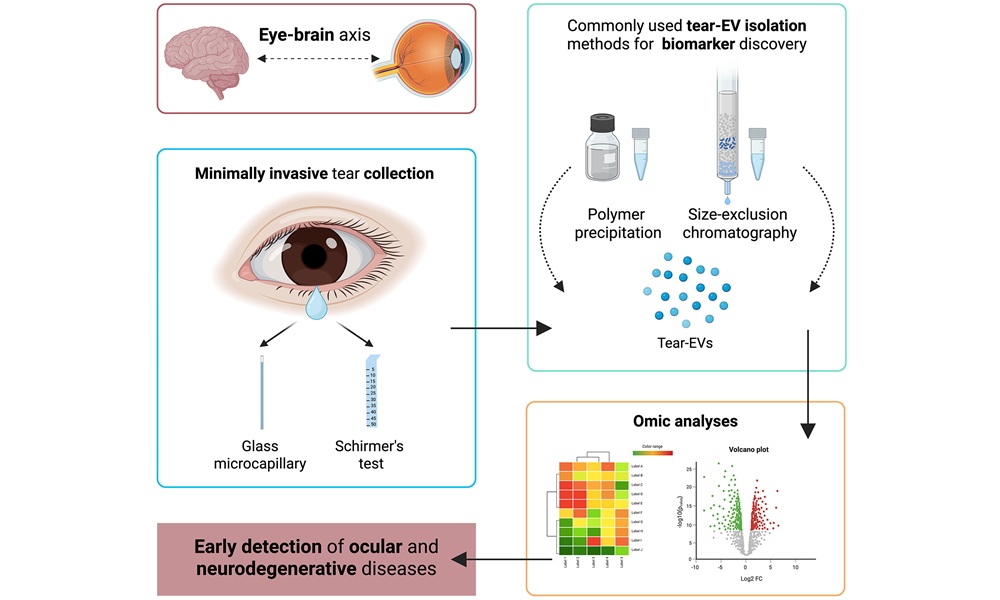
Tears Offer Noninvasive Alternative for Diagnosing Neurodegenerative Diseases
Diagnosing and monitoring eye and neurodegenerative diseases often requires invasive procedures to access ocular fluids. Ocular fluids like aqueous humor and vitreous humor contain valuable molecular information... Read moreTechnology
view channel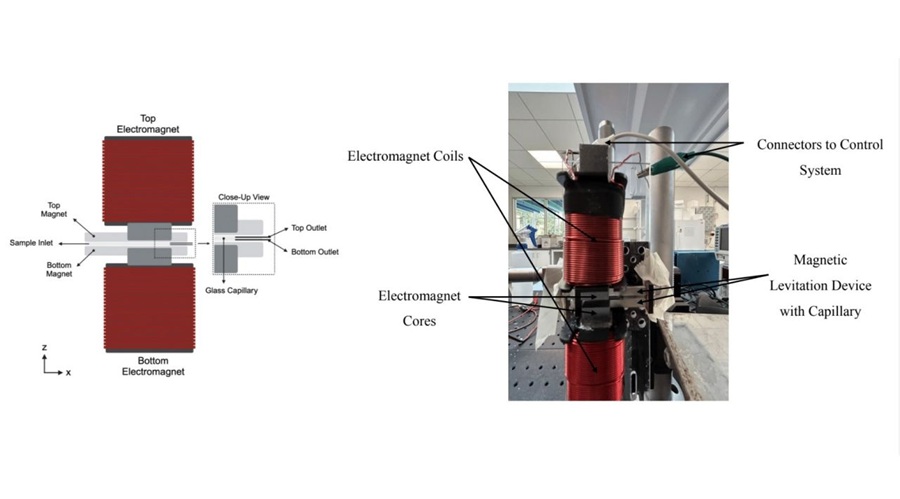
Cell-Sorting Device Uses Electromagnetic Levitation to Precisely Direct Cell Movement
Sorting different cell types—such as cancerous versus healthy or live versus dead cells—is a critical task in biology and medicine. However, conventional methods often require labeling, chemical exposure,... Read more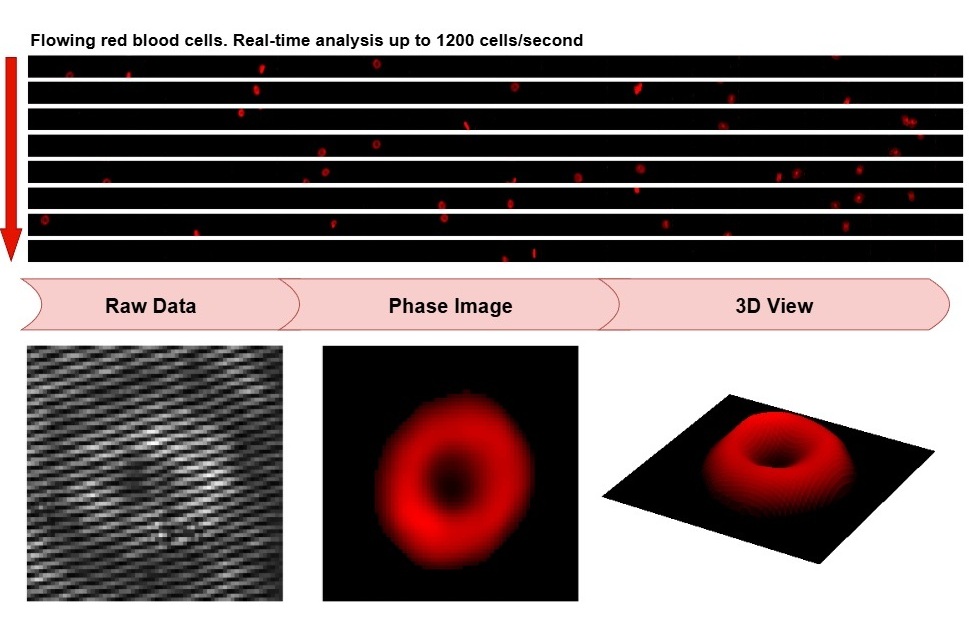
Embedded GPU Platform Enables Rapid Blood Profiling for POC Diagnostics
Blood tests remain a cornerstone of medical diagnostics, but traditional imaging and analysis methods can be slow, costly, and reliant on dyes or contrast agents. Now, scientists have developed a real-time,... Read moreIndustry
view channel
Qiagen Acquires Single-Cell Omics Firm Parse Biosciences
QIAGEN (Venlo, Netherlands) has entered into a definitive agreement to fully acquire Parse Biosciences (Seattle, WA, USA), a provider of scalable, instrument-free solutions for single-cell research.... Read more
Puritan Medical Products Showcasing Innovation at AMP2025 in Boston
Puritan Medical Products (Guilford, ME, USA), the world’s most trusted manufacturer of swabs and specimen collection devices, is set to exhibit at AMP2025 in Boston, Massachusetts, from November 11–15.... Read more
Advanced Instruments Merged Under Nova Biomedical Name
Advanced Instruments (Norwood, MA, USA) and Nova Biomedical (Waltham, MA, USA) are now officially doing business under a single, unified brand. This transformation is expected to deliver greater value... Read more